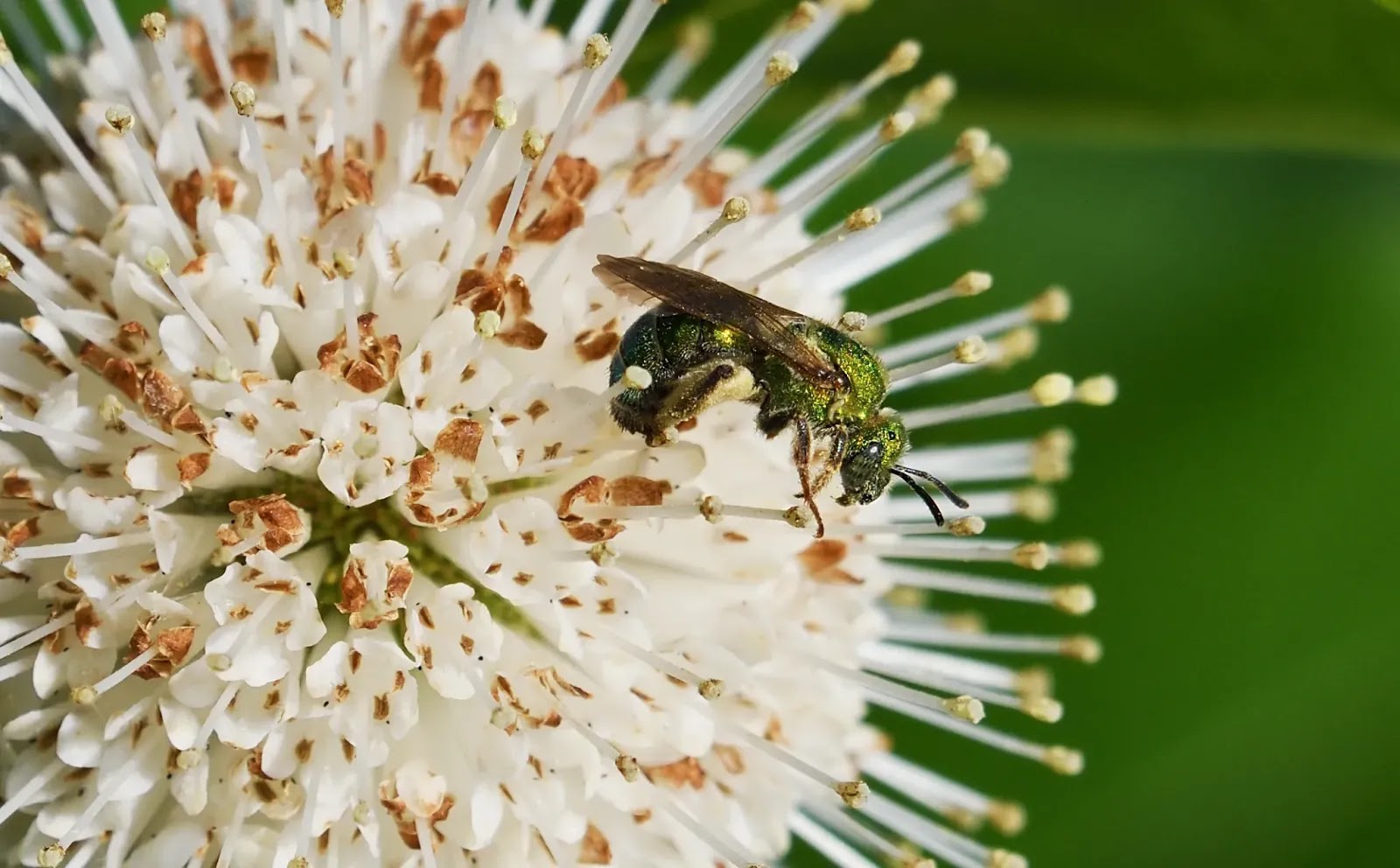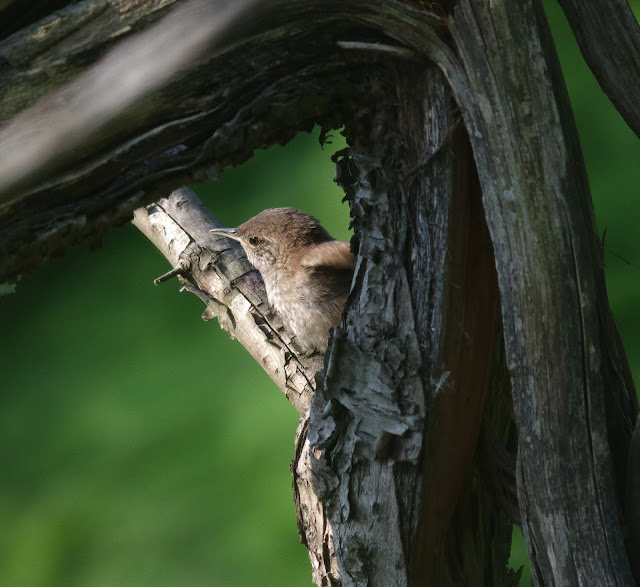Winter in May
The 9th of May saw the temperature drop down to freezing! The soft and squishy waterlogged ground surrounding Shoemaker Lake that could previously only be traversed with the aid of rubber boots had now been transformed into a soft toffee type substance with a thin icy crust. My first thoughts were, what is going to happen to all of the birds that depend on insects to feed? Well, this American Robin had a backup plan. I'm guessing that the seeds of Staghorn Sumac are not the favourite food item for American robins, but in times of need, they are always there.
The yellow-rumped warblers were still somehow managing to find insects to feed on.
The kinglets also, although they are more adapted to hunting for food in much colder temperatures.
And quite to my amazement I actually saw a hummingbird. We had a mixture of snow and hail over the course of the day. The next photo shows a hermit thrush with snowflakes falling around it.
Moving on to Sunday which was almost as cold, but thankfully, no snow. My previous efforts at capturing a photo of the palm warblers through branches and undergrowth now seemed wasted. This palm warbler was quite happy to stand out in the open and spend its morning with me.
These photos also show the telltale wagging of the palm warbler's tail feathers.
Singing definitely seemed to be the theme on Sunday morning, and I had thought to capture that singing on my voice recorder, but I completely messed up without my glasses and was turning the recorder off instead of on, so, unfortunately, its just photos. This house wren was singing to its heart's content from the top edge of Shoemaker Lake. I love how the bark of the branch is completely covered in lichen.
And from the opposite edge of Shoemaker Lake, I was stopped in my tracks by the singing of this bird.
And from the same day, an interesting photo of a hairy woodpecker after it found what I am guessing by its size is a dragonfly nymph.
I followed that song to this bird.
It is a rose-breasted grosbeak, and I was really happy to capture not just a male, but also a female. The most distinctive feature of this bird has to be its incredibly powerful-looking beak.
This photo, taken on the following cloudier day of the 14th of May, from the opposite side of Shoemaker Lake gives a better view of the rose coloration on the male's breast feathers.
A solitary sandpiper kept its distance, but the other sandpiper, a spotted sandpiper, walked right up to my location.
The kinglets also, although they are more adapted to hunting for food in much colder temperatures.
And quite to my amazement I actually saw a hummingbird. We had a mixture of snow and hail over the course of the day. The next photo shows a hermit thrush with snowflakes falling around it.
Moving on to Sunday which was almost as cold, but thankfully, no snow. My previous efforts at capturing a photo of the palm warblers through branches and undergrowth now seemed wasted. This palm warbler was quite happy to stand out in the open and spend its morning with me.
These photos also show the telltale wagging of the palm warbler's tail feathers.
Singing definitely seemed to be the theme on Sunday morning, and I had thought to capture that singing on my voice recorder, but I completely messed up without my glasses and was turning the recorder off instead of on, so, unfortunately, its just photos. This house wren was singing to its heart's content from the top edge of Shoemaker Lake. I love how the bark of the branch is completely covered in lichen.
And from the opposite edge of Shoemaker Lake, I was stopped in my tracks by the singing of this bird.
With my subject backlit and viewing from below, I found it hard to identify the warbler, maybe a Nashville warbler. It wasn't until it flew down to eye-level and started singing again that I was able to identify it as a Northern Parula.
My failure at recording the house wren singing prompted my return to the same location a few days later to repeat my attempt.
This is the house wren's song.
And from the same day, an interesting photo of a hairy woodpecker after it found what I am guessing by its size is a dragonfly nymph.
Another member of the woodpecker family was also in the vicinity, searching for whatever it could find to eat, but northern flickers like to hunt for their food on the ground.
Thankfully, the weather started to warm up. Much to the delight of all the birdwatchers and photographers who have been visiting Lakeside Park for the warbler migration. These two squirrels were also making the most of the warmer, sunnier weather.
There are lots of ducklings and goslings at Lakeside Park and although they are undeniably cute and photogenic, do not get too close to the geese as they are very protective of their young.
I have included a few warbler photos in this post and you're probably wondering, where are all of the other warbler photos? I have simply accumulated too many to include in this post, so I will continue with the other birds I have encountered. I'll save the warbler photos for a future post.
While all the other photographers and birdwatchers were preoccupied with the warblers down by the edge of Shoemaker Lake, I heard an unusual song from up in the pine trees (please try to ignore the red-winged blackbird in the background).
I followed that song to this bird.
It is a rose-breasted grosbeak, and I was really happy to capture not just a male, but also a female. The most distinctive feature of this bird has to be its incredibly powerful-looking beak.
This photo, taken on the following cloudier day of the 14th of May, from the opposite side of Shoemaker Lake gives a better view of the rose coloration on the male's breast feathers.
From the same dull day, I spotted two sandpipers at the very edge of Shoemaker Lake beside the wooden bench. I had observed these birds over the last few days, but getting close enough for a detailed photo was almost impossible. On this day though, I was able to sneak up unseen from behind some bushes.
A solitary sandpiper kept its distance, but the other sandpiper, a spotted sandpiper, walked right up to my location.
The spotted sandpiper came so close that it was even possible to see what it was feeding on.
Copyright © wildlakeside.blogspot.com 2020 Scott Atkinson All Rights Reserved.























Comments
Post a Comment